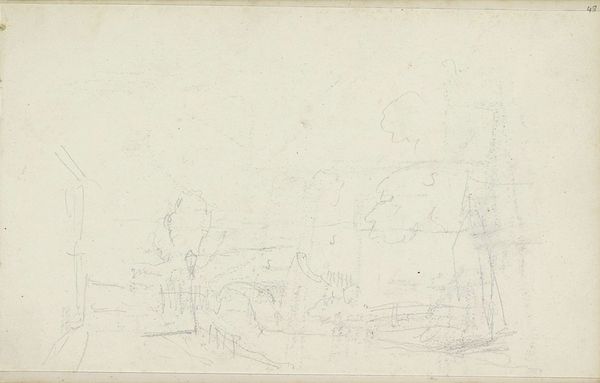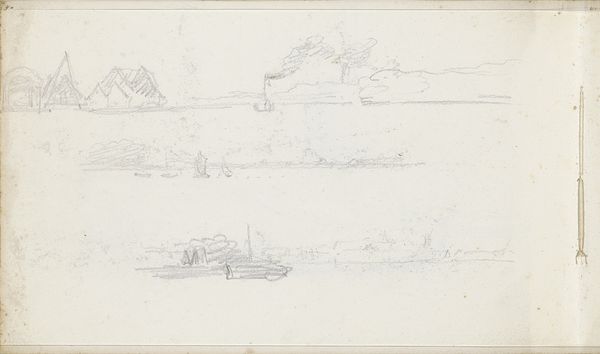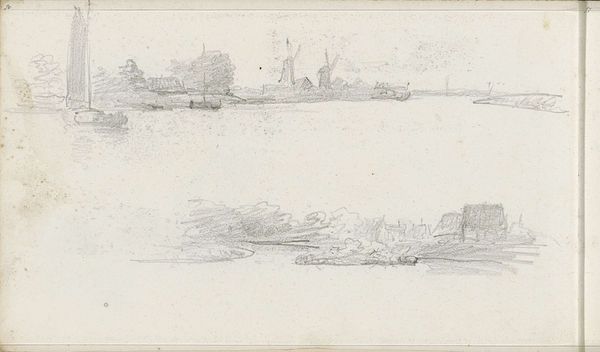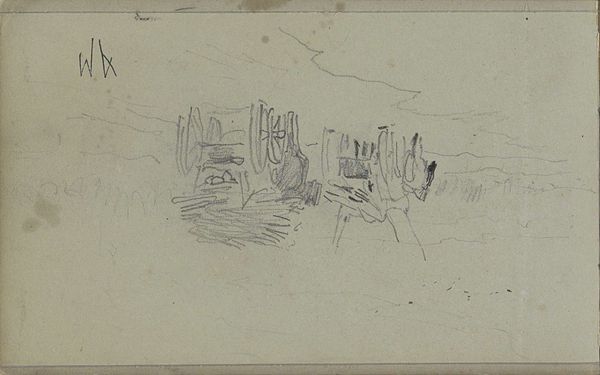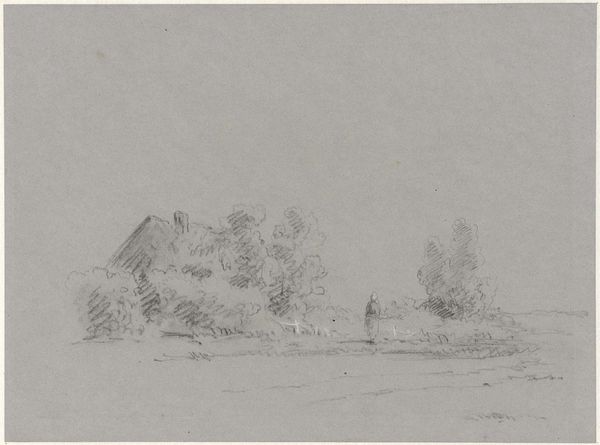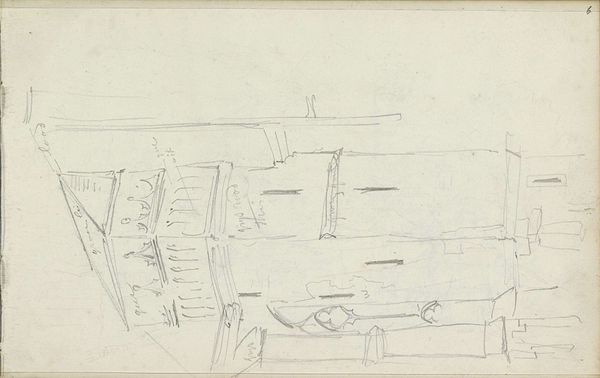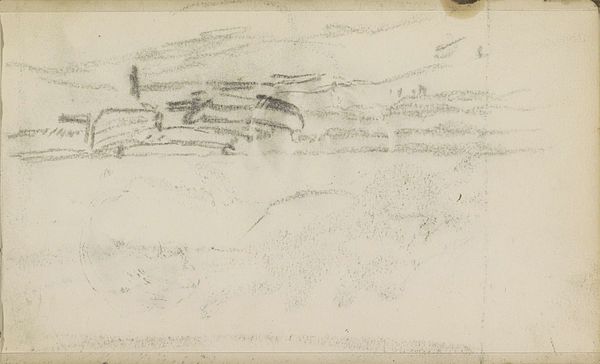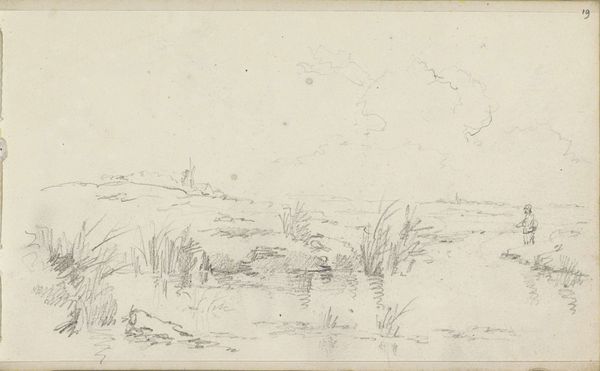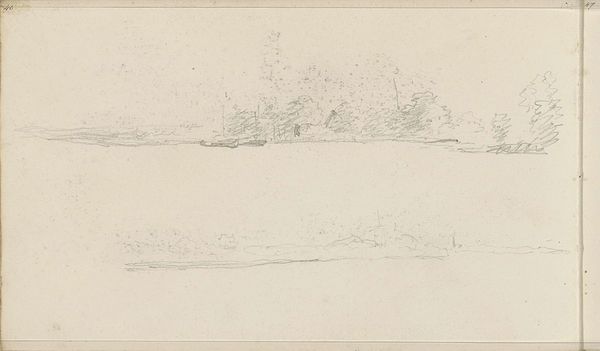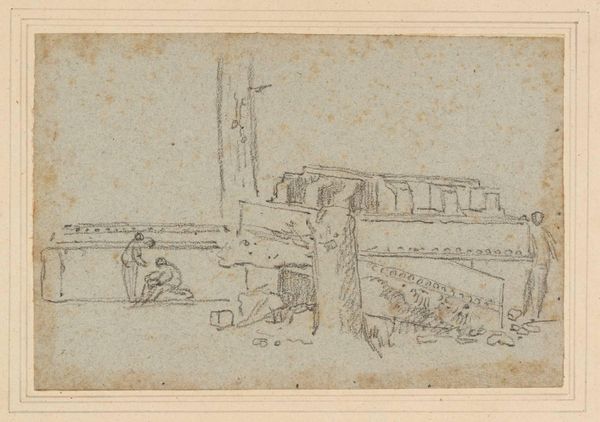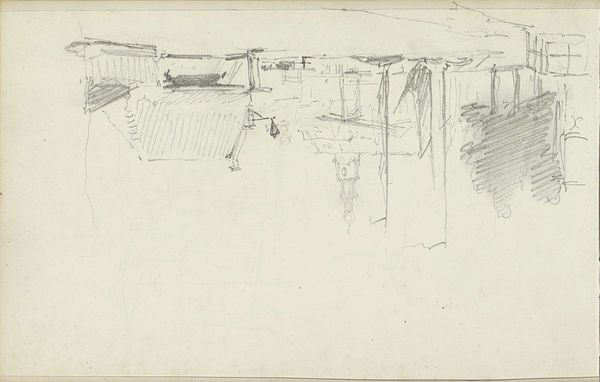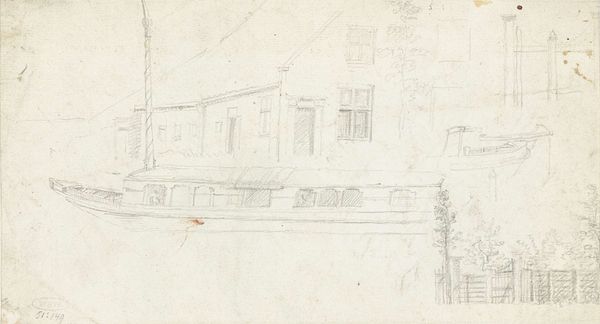
#
amateur sketch
#
aged paper
#
toned paper
#
light pencil work
#
sketch book
#
incomplete sketchy
#
hand drawn type
#
river
#
personal sketchbook
#
sketchbook drawing
#
sketchbook art
Copyright: Rijks Museum: Open Domain
Editor: This is "River Views with Houses and Mills" by Petrus Johannes Schotel, dating from around 1841 to 1865. It's a pencil drawing in what looks like a sketchbook. It feels almost like a fleeting memory, these ephemeral sketches of a river landscape. What do you see in this piece? Curator: These sketches offer a fascinating glimpse into 19th-century Dutch life along the waterways. It’s important to consider how landscapes, like these river views, are never neutral. They reflect the social and economic relationships of the time. These rivers weren’t just picturesque; they were arteries of commerce, integral to the rise of industrial capitalism. Do you notice how the mills dominate one of the sketches? Editor: Yes, they're quite prominent. They feel connected to a specific time. Curator: Precisely. And those houses clustered along the riverbanks? Consider them not merely as dwellings, but as visual signifiers of a community shaped by labor, trade, and their relationship with the environment. These weren’t simply pretty scenes; they represent a negotiation, sometimes a struggle, between people and place. Think about who had access to these landscapes and how their depiction could reinforce existing power structures. Editor: I hadn’t considered the power dynamics inherent in landscape art before, especially in what seems like a simple sketch. Curator: Schotel, consciously or not, participates in shaping our understanding of the Dutch relationship with its waterways. By rendering these scenes, he immortalizes a particular vision of labor and progress. His choice of imagery tells us about 19th century life. It also hints to us what he valued, or was encouraged to value. Editor: That's a great reminder that even seemingly simple art has layers of historical and social meaning. I'll definitely look at landscapes differently from now on. Curator: I think reflecting on this history adds depth to this experience. Now, where do we go from here?
Comments
No comments
Be the first to comment and join the conversation on the ultimate creative platform.
